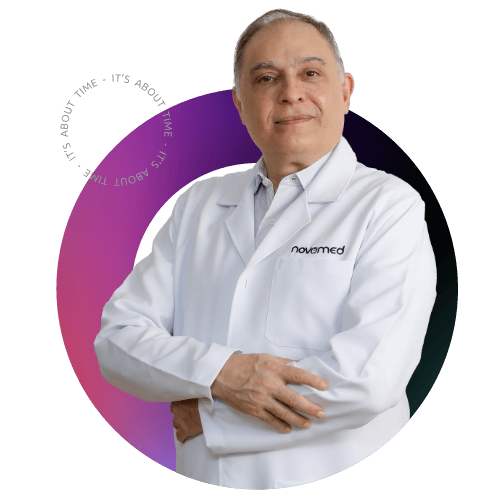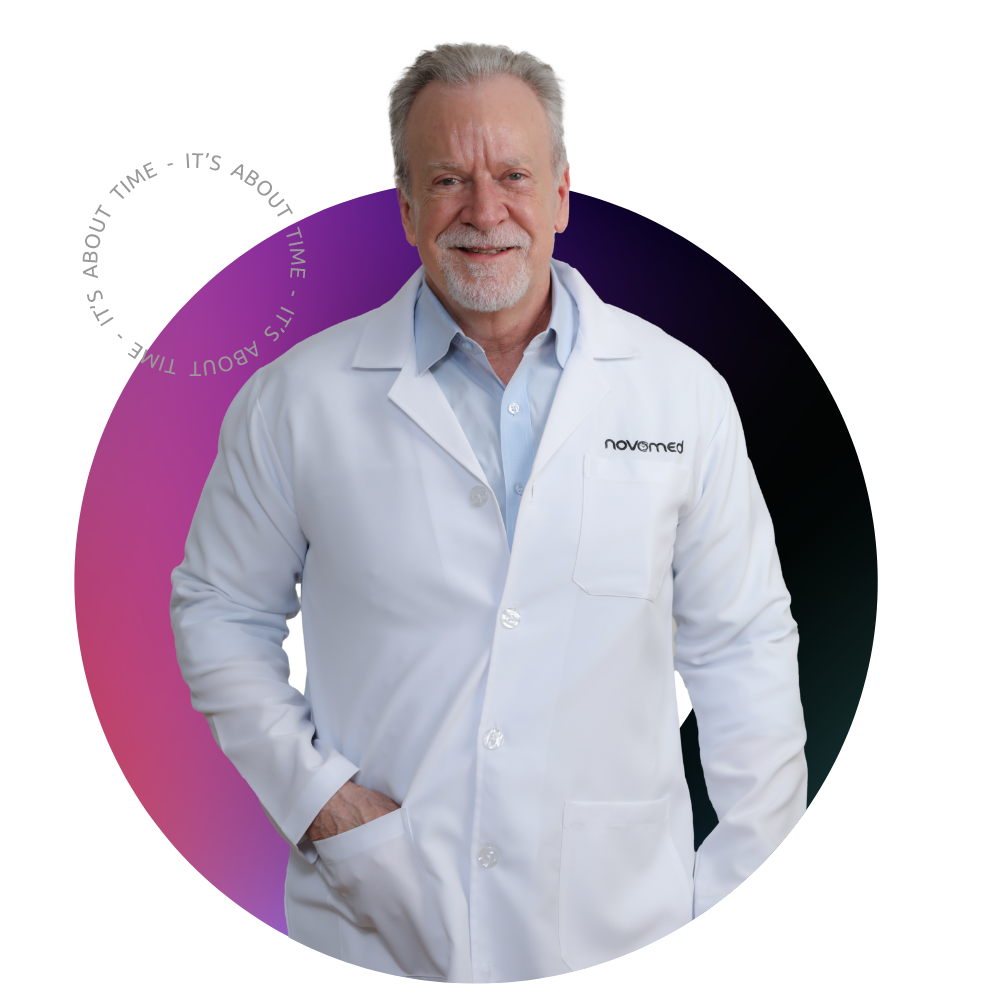Bone and joint disorders and sports injuries can limit the function and mobility of many people. Ortho Specialists at Novomed seek to improve the quality of life for patients who suffer from these conditions and help them restore a healthy level of activity.
Our Orthopedic doctors at Novomed provide assessment, diagnostic services and surgical and non-surgical treatments for musculoskeletal disorders and develop tailored treatment plans to address the needs of each of our patients. They treat sports injuries alongside complex conditions that may require a knee replacement, hip replacement or spinal surgery, as well as procedures for the neck, shoulders, hands, wrists, elbows, feet and ankles.
By gathering a multidisciplinary team of the best orthopedic consultants and specialists, we offer our patients a unique experience and the highest standard of care in a safe and friendly environment that provides access to state-of-the-art treatment. We use advanced imaging technologies to ensure patients can receive the most appropriate diagnostic evaluations and orthopedic treatments. Treatments offered include both surgical and non-interventional procedures such as radio-frequency ablation, nerve blocks, stem cells and PRP.
Our orthopedic surgeons in Dubai and doctors offer the full spectrum of orthopedic services to adults and children; they can treat disorders of the bones, joints, ligaments, tendons and muscles and help their patients move with greater comfort and ease.
Our orthopedic services include:
- General orthopedic conditions
- Orthopedic care
- Musculoskeletal disorders
- Shoulder pain
- Elbow pain
- Spine pain
- Hand pain
- Hip pain
- Knee pain
- Foot and ankle pain
- Sport injuries
At Novomed Orthopedic Clinic, our physicians work together with neurologists, physiotherapists and other specialists to provide the patients with the most comprehensive treatment plans and support their recovery.
Common Orthopedic Conditions:
What is the Difference Between Arthritis, Osteoarthritis and Rheumatoid Arthritis?
‘Arthritis’ is an umbrella term for conditions where the joints are inflamed. The different types of arthritis include osteoarthritis and rheumatoid arthritis, which are often confused, but very different based on their causes.
Osteoarthritis is a degeneration of the cartilage around the joints, which comes with age. Rheumatoid arthritis, on the other hand, is an autoimmune disease that can affect other parts of the body in addition to the joints.
Nevertheless, the two diseases share common symptoms when it comes to joint pain, although rheumatoid arthritis will have symptoms relating to the rest of the body as well – fatigue, for example. Basic symptoms of both diseases include:
- painful, stiff joints
- tenderness or warmth around the joint
- limited range of motion
- symptoms are worse on waking
What is Osteoporosis?
Osteoporosis is a disease characterized by a decrease in both the density and quality of your bones. It is a progressive disease, and there are often no symptoms until the fragility of the bones results in a fracture, often from a relatively minor incident. The break can be a crack (as is the case in a hip fracture) or a collapse (for example, a compression fracture of the spine’s vertebrae). Bones commonly fractured by osteoporosis sufferers are the spine, hips, ribs, and wrists.
As the disease can progress silently, it is recommended vulnerable groups have bone density tests. Women over 65 and those with medical conditions associated with the disease are particularly vulnerable.
Our specialists will be able to help you come up with a treatment plan that is right for you. Lifestyle changes that help to slow down the loss of bone density include exercising regularly, quitting smoking, limiting alcohol, and getting enough calcium and vitamin D. In addition, undergoing bio-identical hormone replacement therapy can help, plus there are several medicines that can help prevent and treat bone loss.
What is Sciatica?
Sciatica is pain that radiates from the lower back or buttock area downwards, caused by the irritation of the sciatic nerve. This irritation is usually due to a lumbar disc herniation that is pressing on the nerve directly, but any irritation or inflammation of the nerve can cause it.
Symptoms usually get worse when you are sitting, and they are normally felt in just one leg.
Aside from the pain, symptoms include tingling, numbness and ‘pins and needles’. If sciatica is left untreated, muscular weakness and a loss of leg function can result.
Treatment involves identifying and addressing the underlying condition causing the nerve compression. It can include anti-inflammatory drugs, and an exercise program involving beneficial stretches, hot-and-cold therapy, and physical therapy. Only when these conservative approaches have been exhausted, would surgery be considered.
What is Scoliosis?
Scoliosis is a condition where the spine curves to one side by more than 10 degrees. In most cases, the cause is unknown. While scoliosis is not normally painful, there are certain types that can cause pain in the ribs, back, neck and abdomen, as well as muscle spasms.
Scoliosis is diagnosed through a physical examination, and imaging tools such as X-rays, magnetic resonance imaging (MRI) and computerized tomography (CT) scans.
Depending on the severity of the curvature and the possibility of it increasing, scoliosis can be treated through observation, wearing a brace, or surgery.
What is Carpal tunnel syndrome?
Carpal tunnel syndrome is caused by pressure on the median nerve in your wrist. This nerve controls feeling and movement in parts of your hand and runs from your forearm, through a small space called the carpal tunnel, to your hand. If anything, such as swelling, narrows the tunnel and puts pressure on the nerve, you will experience symptoms such as pain, tingling, numbness or weakness in your hand, or less often, the forearm. This pressure could be the result of many factors, including repetitive movements of the hand or wrist, pregnancy or diseases such as rheumatoid arthritis, diabetes and hyperthyroidism.
Mild symptoms can usually be treated at home, for example by applying ice and avoiding activities causing the pain. However, if your symptoms are more severe, you will need to see a doctor. The sooner you start treatment, the better to avoid long-term nerve damage.
To diagnose you, our specialists will give you a physical exam, and may order tests such as blood and nerve tests. In addition to medicine to treat the symptoms, there is a range of complementary therapies, such as physical therapy or ultrasound, that can help. If your symptoms don’t improve and are severe or interfering with your daily life, or if it is found you have nerve damage, surgery might be the answer.
If you have any inquiries about our orthopedic services or want to book an appointment with our Ortho Specialist, feel free to call us toll-free on 800 (NOVO) 6686 or fill the booking form on our website.



























